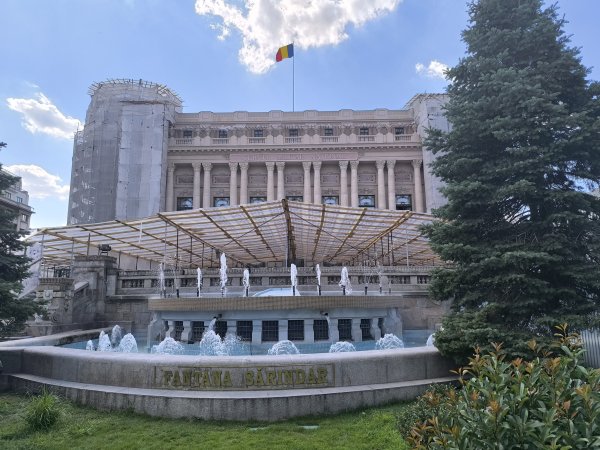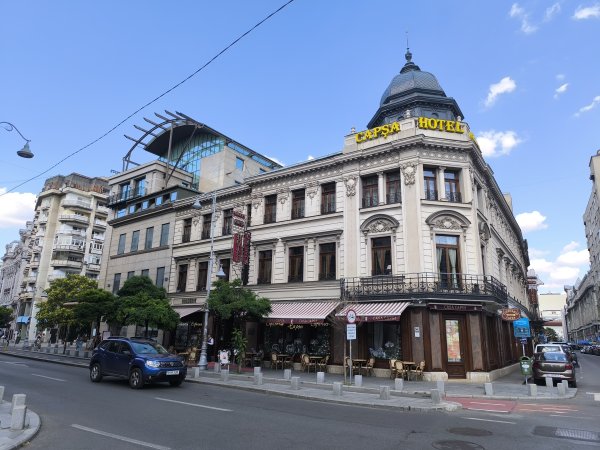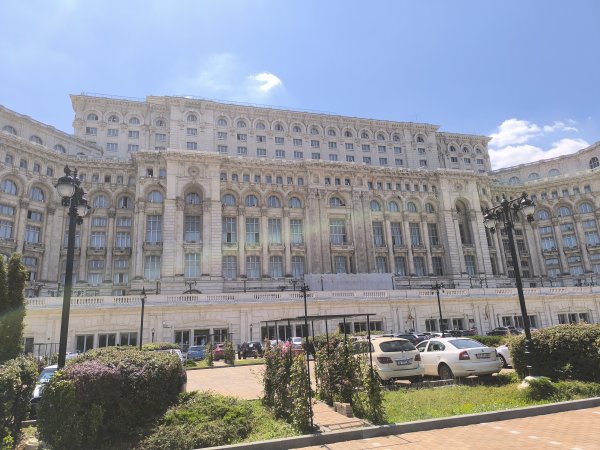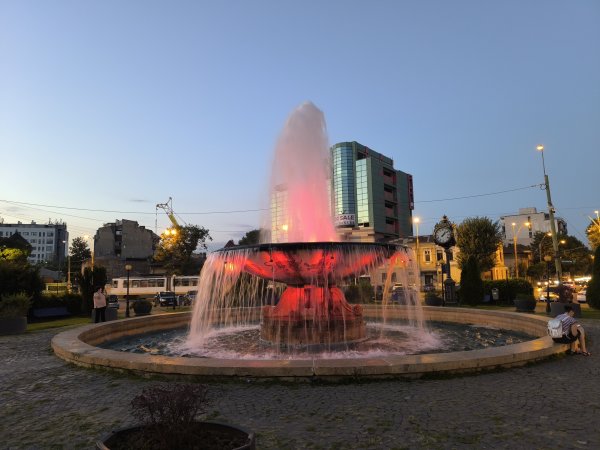
Let’s leave the treasures of Orthodox churches and theology for a while, because I would like to guide you a bit to see the modern architecture of Bucharest.
The features are indeed similar to Vienna, Paris and Budapest, and there are many historicist, art nouveau and neoclassicist buildings, long boulevards and avenues, huge squares and plenty of monumentalism and romanticism.


I really recommend you a walk along Calea Victoriei (Victory Avenue) where there are many pieces of architecture, just like the Palace of the Deposits and Consignments, the National Military Circle (Cercul Militar Național), or the Royal Palace, which hosts the National Museum of Art today. One of the most remarkable buildings is the Romanian Athenaeum (Ateneul Român), a characteristic city theater resembling the style of the Pantheon in Rome.



Personally, I also liked the Palace of Telephones and the Odeon Theater that you can also find by this avenue, and obviously one should not miss the Triumphal Arch (Arcul de Triumf) which is not in the city center, but is worth to see with your own eyes on your way to King Mihail Park which I am going to mention a bit later.
By the way, walk everywhere with open eyes, because from the center to the outskirts you can meet a lot of charming public clocks in a let’s say, nostalgic 19th-century design.



Back to the topic, there’s no doubt about that the architects of the arch used the style of the Arc de Triomphe in Paris as an example, but with changes referring to Romanian culture. Normally, the arch is isolated in a middle of a roundabout, but it is still used for military parades marching beneath the building.
The original arch was erected in 1922, but since it had serious damages, then a different one was designed by the same architect, Petre Antonescu 14 years later.


My general observation about the architecture of the city is that it is very unique and sometimes even surrealistic that there are very different buildings coexisting in the same neighborhood.
If you pass by Dâmbovița and, you will see huge office buildings right next to ancient Orthodox monasteries;socialist-realist blocks from the Ceaușescu era next to monumental romantic buildings and old town houses and mansions next to industrial areas or contemporary flats.



In terms of public areas where one can gather, it is crucial to mention the University Square and the Union Square (Piața Unirii), referring to the union of Wallachia, Moldavia and Transylvania.
The Union Square is an important junction point and also full of street bars, shops and restaurant which makes it a great starting point, particularly because its wide flat area and mesmerizing fountains (Fântânile) in the middle.


The square lies along the Union Boulevard (Bulevardul Unirii), which finishes its path at the Constitution Square, right before the Palace of the Parliament (Palatul Parlamentului).
The Romanian Parliament is less decorative and more functionalist compared to our Hungarian Parliament, Országház, having won the title of the most beautiful parliament many times so far. So to be honest its Bucharest equivalent did not impress me as a piece of art of its own, but the monumental sizes it has are indeed respectable.


Just think about the fact that it is one of the heaviest buildings in the whole world with the highest costs of maintenance! It is really a breathtaking achievement, so there is no wonder that even with the most advanced, modern techniques it was being constructed for more than ten years with the participation of 700 architects.
Unfortunately, I did not have time and opportunity to enter, but I have checked the photos on the internet and the internal design is worthy to be admired in person.


In spite of every miraculous sights I have mentioned so far, there is an unexpected beauty and advantage of Bucharest I had never thought about, and it’s the city’s approach towards parks and public gardens.
Among the dozens of small parks, I would like to highlight two fundamental parks: one of them is Carol Park, where the charming Zodiac Fountain welcomes you right at the entrance.


The park is named after Romania’s first king, Charles I, and has a long path through a little lake to the central monument of the place, the Tomb of the Unknown Soldier, dedicated for all the soldiers who have ever died for the country.
The enormous tower and mausoleum with torch fires certainly draw attention both day and night and now is guarded all the time.


I do not know if it was a coincidence or not, but the shape and arrangement of the park with its long ground plain, the entrance, the path leading to the monument and the tomb itself in the center reminded me to everything I learnt about Orthodox churches in Sfânta Ecaterina, and I have just realized this all afterwards.
Not so far, at the edge of the park there is Arenele Romane (Roman Arenas) which is used for concerts and various sport events nowadays (it was not built in the Roman times but a later work like in Poznań for instance).


There are many further hidden objects in the park like the Cantacuzino Fountain or the Ţepeș Castle named after Vlad the Impaler – the fascinating fact to compare is that the Castle of Vajdahunyad stands, which is also a romantic building imitating original medieval castles, stands in Városliget, Budapest’s most important park.
It is interesting because apart from Castelul Bran (in Hungarian: Törcsvári kastély) which is considered to be the castle of Dracula (Vlad), the other famous castle of Transylvania is the Hunyadi Castle (Castelul Corvinilor) – the model of Vajdahunyad...


